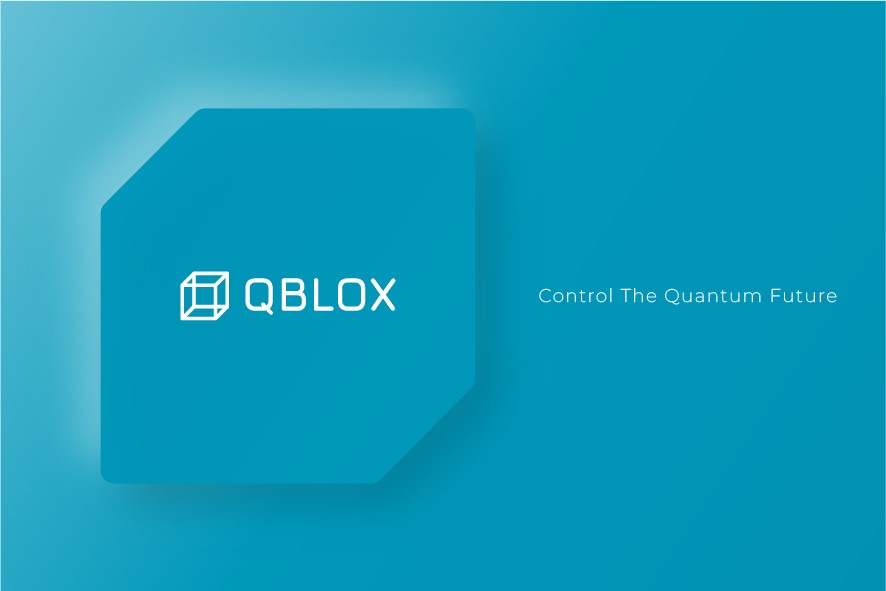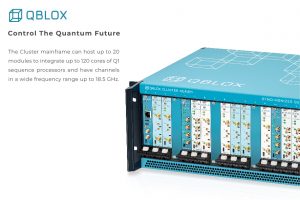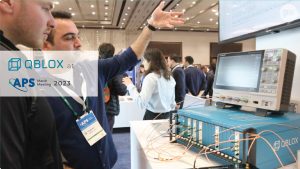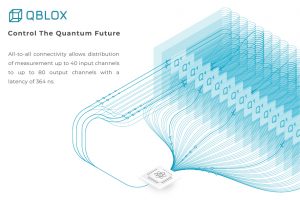Fast Scalable Feedback Is A Piece In The Puzzle Of Quantum Error Correction

If you walked into a quantum lab in 2019, you would most likely have found a combination of general-purpose lab equipment frankensteined together in a mess of cables. These piecemeal setups allowed quantum researchers to do fundamental research for future quantum computers but they lacked the scalable and efficient architecture needed for quantum computing. Founders Niels Butink and Jules Van Oven of the integrated quantum control stack company, Qblox, recognized the commercial opportunity for hardware that was scalable up to hundreds of qubits and could save labs time and money in the setting up of experiments on the road to NISQ applications and fault-tolerant quantum computing.
The Quantum Control Stack
 Thus, the Cluster came into being. The Qblox Cluster is a quantum control stack that integrates all hardware components and software needed to control and readout qubits. This modular system allows for a scalable and distributed architecture; rather than a jumble of noise-creating cables and lab equipment, the Cluster is a neat stack of dedicated control electronics.
Thus, the Cluster came into being. The Qblox Cluster is a quantum control stack that integrates all hardware components and software needed to control and readout qubits. This modular system allows for a scalable and distributed architecture; rather than a jumble of noise-creating cables and lab equipment, the Cluster is a neat stack of dedicated control electronics.
It’s SYNQed and LINQed
While the Cluster brought together all the hardware into a high-density control stack, the already growing Qblox team faced their next challenge: making all components synchronized and working coherently. This led to Qblox inventing SYNQ and LINQ protocols.
QBLOX a Silver Sponsor at IQT Nordics 2023 June 6-8
The SYNQ protocol takes care of synchronizing the electronics to ensure fully deterministic pulses. It does not require external trigger cabling, in turn, reducing noise. This protocol allows labs to scale up or down to their needs.
The LINQ protocol distributes measurement outcomes to all modules in the Cluster. The LINQ protocol allows all-to-all connectivity of the distributed intelligence, meaning that up to 80 control channels are linked to up to 40 input channels for feedback operations within 364 ns. This creates a network, opening the door for quantum error correction algorithms.
Fast Scalable Feedback
Now, Qblox has over 70 employees, and recently launched fast scalable feedback at the APS March  Meeting 2023. Video here. Fast scalable feedback is built on top of the backbone of SYNQ and LINQ protocols’ distributed intelligence. It allows all-to-all connectivity across the Cluster, meaning that the end user can share measurement outcomes from any readout channel to all other control channels in the same time window. Fast scalable feedback is the manifestation of Qblox’s scalable architecture to most-wanted feedback applications.
Meeting 2023. Video here. Fast scalable feedback is built on top of the backbone of SYNQ and LINQ protocols’ distributed intelligence. It allows all-to-all connectivity across the Cluster, meaning that the end user can share measurement outcomes from any readout channel to all other control channels in the same time window. Fast scalable feedback is the manifestation of Qblox’s scalable architecture to most-wanted feedback applications.
From Minutes to Seconds
An immediate application of fast scalable feedback is active reset, an operation that overcomes a bottleneck for NISQ applications. Qblox’s active reset operation reduces the experimental overhead from minutes to mere seconds.

While currently relevant for NISQ-era experiments, the long-term application of fast scalable feedback is quantum error correction. In the future, Qblox will be able to carry out multiple operations on hundreds, or even thousands, of qubits. For now, the Cluster and fast scalable feedback are pieces of the puzzle toward fault-tolerant quantum computing in the future.
SPONSORED by Qblox.
By: Kendall Behr, Senior Copywriter, Qblox
























